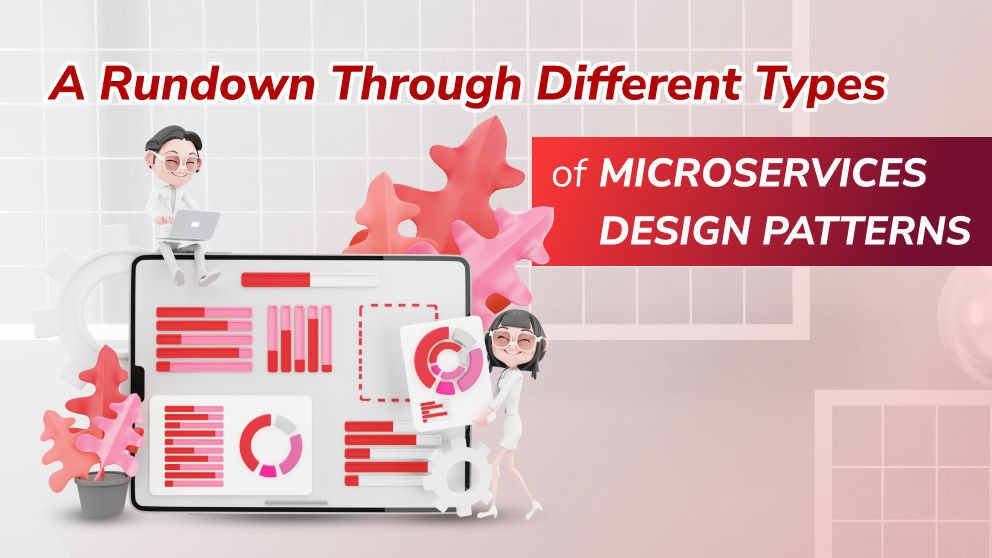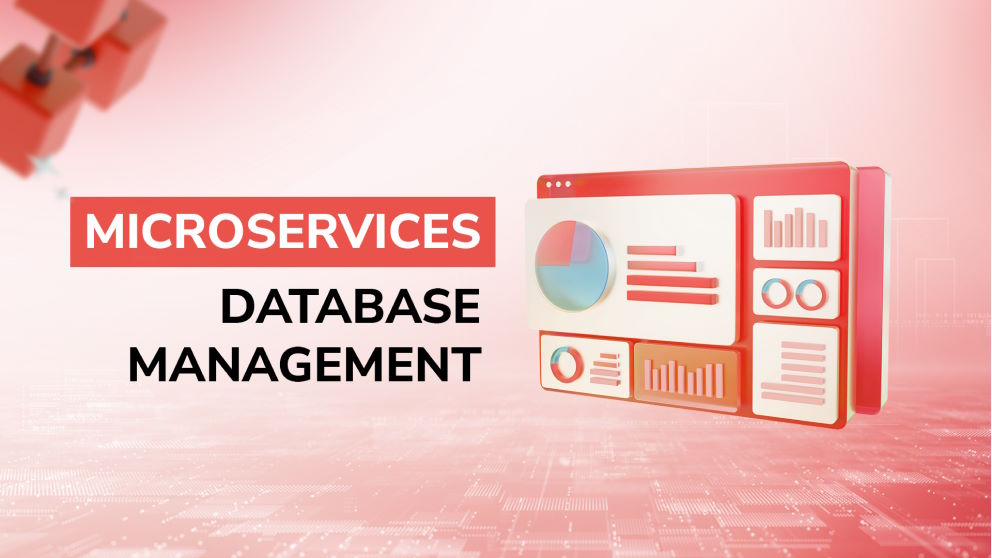
9 Essential Benefits of Microservices Architecture Explained
The benefits of microservices are scalability, improved fault isolation, stronger security, and more. This article explores all nine key microservices' benefits.
In the software development realm of today, the monolithic architecture has gradually stood aside and given way to microservices. At the current time, monolithic systems fail to meet the demands of bigger companies or enterprises that are now looking for more flexible and scalable solutions.
A microservices-based application, on the other hand, is composed of smaller, individual services that are built to work together yet independently; thus, they can be modified or replaced without easily affecting the entire system. Therefore, microservice architectures outperform traditional monolithic architectures in many ways, but they do not have their flaws. In this article, we are about to showcase all the upshots and drawbacks of microservices in detail.

First and foremost, let’s uncover the exact definition of microservices.
Microservices architecture refers to a software development pattern in which an entire application (A monolithic system) is divided into multiple services. These are small, manageable, and independently deployable - how they are called microservices. Each and every one of the independent services is self-contained and runs in its own process. It also communicates with others through well-defined interfaces, such as Application Programming Interfaces (APIs).
Microservices have emerged as a significant advance from Service-Oriented Architecture (SOA), which was initially introduced to cope with the limitations of conventional architectures. Compared to SOA, this architectural style has more emphasis on the independent operation of different services, its deployment and testing automation, and continuous deployment. All these contribute to the ease of maintaining the overall system over time.
In overview, the theory behind microservices is rooted in the following principles:
A Gartner report (published in July 2023) indicates that approximately 74% of respondent organizations utilize microservices. Additionally, 23% of business leaders plan to leverage microservices. The stats underscore the growth in adoption rate and the tendency to switch from conventional architectures to microservices in the future.
From this section on, let’s outline the pros and cons of microservices.

Microservices-based applications are typically simpler and more efficient than monolithic ones in terms of maintenance and upgrade. Thanks to the modular nature of microservices, developers are able to deploy new features or bug fixes with no compromise on the rest of the system.
In addition, because microservices are self-contained, they do not require the same level of coordination and communication that is needed for a monolithic application. This results in faster development and alleviates the burden of software maintenance, thereby optimizing resource allocation and reducing development costs overall.
Microservices can be scaled horizontally with no hassle; thus, this architectural approach is ideal for cases wherein scalability is a priority, such as projects of large and complex software systems. In other words, developing applications in the microservice style makes it easier to react to traffic spikes and helps to maintain the overall system stability.
Additionally, with microservices, all the components are small and modular, so they can be deployed much faster than in a monolithic architectural style. This increased agility can become a major advantage for software products that need to proactively respond to changes in the market.
Microservices are more fault-tolerant than monolithic applications. Smaller and modular services can be independently deployed and managed. If one service encounters issues, it does not bring down the entire application or cause problems with other components. Improved fault isolation can be a major advantage for companies that cannot afford to have their applications go down.

In microservice architecture, software developers are able to handle smaller modules without an in-depth understanding of the whole system. This makes it much simpler for new developers to join the project and catch up with the pace, as well as for current project members to switch from one service to another with ease. Moreover, microservices facilitate parallel development in which multiple teams work on different components simultaneously without interfering with each other.
With monolithic architecture, testing every part of the system costs effort and resources, which is not only prone to error but also poses potential for challenges at scale. In contrast, microservices lend themselves to a more straightforward and manageable method of testing. As each microservice is relatively simple, testing can be done individually before integrating into the main application. This minimizes complexity, and developers can worry less about the time-consuming debugging processes.

Microservices are beneficial for development, that is no doubt. However, this architecture style does introduce complexity in the management of distributed systems, especially for those who have not worked with microservices before. With a system broken down into multiple smaller services, it is much easier to handle and deploy each of them independently; however, ensuring the compatibility and monitoring interactions for system stability can be overwhelming.
The first reason could be that a single application is divided into numerous services with multiple databases of their own. This calls for more effort to oversee all of them when the number of services grows out of control.
In addition, managing microservices requires diverse technical expertise in different technologies, languages, frameworks, etc. Consequently, organizations need to invest in training or recruiting highly skilled DevOps teams that can fully manage microservices from development to deployment.
Thirdly, project managers must consider collaboration across teams. Smooth coordination between developers of different services and their respective features is crucial to making management tasks less tense.
Microservices are designed to be self-contained, distributed systems; hence, they rely heavily on the network to communicate with each other. This can result in longer response times (network latency) and increased network traffic (traffic congestion).
In addition, it can be more difficult to track down errors that may occur when multiple microservices are communicating with each other. For all of these reasons, inter-service communication is the key aspect that needs thorough attention.
Microservices operate separately and are not tightly coupled, unlike monolithic architecture systems. This is an advantage yet also poses challenges for maintaining data consistency across different services.
If one is updated, it may affect how others interact with that particular data. The inconsistency occurring can lead to issues associated with data synchronization, and inconsistent or incorrect information awaiting developers and users when integrating data from multiple services or during database migrations.
Despite many other strengths, microservices are limited in the ability to reuse code. Developers have to recreate code independently (or near-independent) from each service, which can consequently increase software development costs and time.
This can be challenging, especially when smaller services depend on shared functionalities. Without proper management of shared resources, developers may create duplicate features or introduce inconsistencies in the codebase.

In order to be successful with microservices, organizations need to have a strong DevOps team in place. This is due to the fact DevOps is responsible for deploying and managing microservices. Without a good one by your side, it can be difficult to either implement or manage a microservice-based application.

Testing and debugging a microservice-based application can be another concern because the application is spread out across multiple servers and devices. Therefore, to effectively test and debug an application in microservices architecture, you need to have access to all of the servers and devices that are part of the system. This can be no big deal for a monolithic application but can be challenging to do in a large, distributed system.
There are multiple use cases where microservices can be leveraged for improved efficiency and performance. Each of these use cases can benefit from the microservices architecture in different ways. Some of the most common ones include:
In summary, microservices architecture does have a number of advantages over traditional monolithic and SOA architectures. But it is not without disadvantages. Hence, it is significantly important to weigh the pros and cons of microservices before deciding if it is the right approach for your project.
Are you still uncertain about your decision? Kindly consult with our experts. They are all elite specialists handpicked by Orient Software - one of the leading companies renowned for custom software development and IT staff augmentation services. At Orient, we pride ourselves on delivering bespoke solutions catered to the needs of each and every project or business. Don’t hesitate to get in touch for personalized support and advice.
The benefits of microservices are scalability, improved fault isolation, stronger security, and more. This article explores all nine key microservices' benefits.
Explore the fundamentals of web application architecture and learn everything you need to know about scalable and efficient web applications.
Let’s clear up the difference between serverless and microservices and figure out the right choice to empower your project’s big plan.
What do you know about microservices design patterns? Let's walk through different types of microservices patterns and closely examine each.
Let’s learn the fundamentals of microservices database management and common patterns to implement in this introductory guide.





